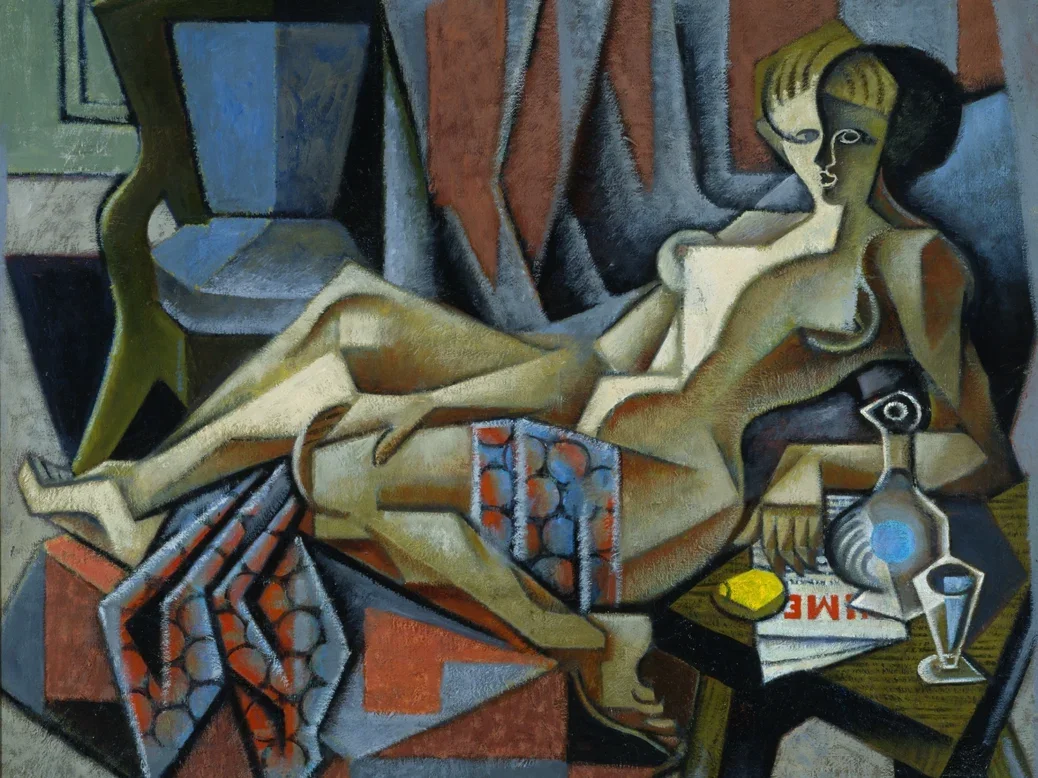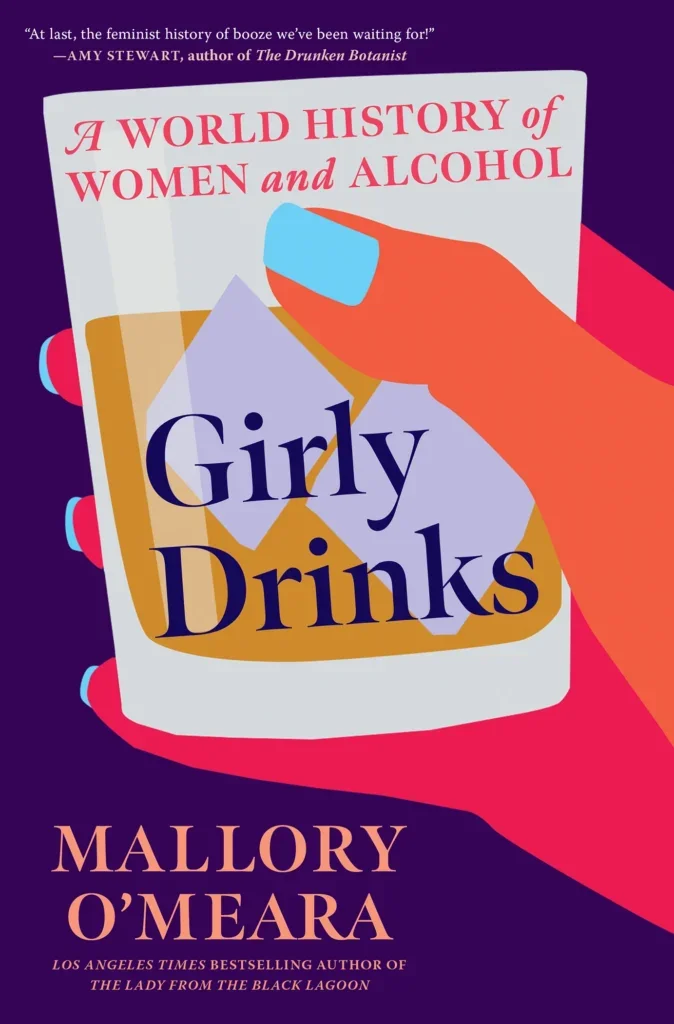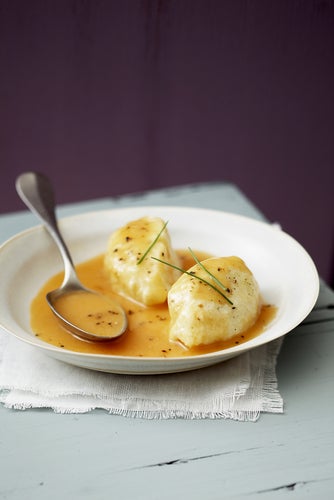
Stuart Walton reviews Girly Drinks: A World History of Women and Alcohol by Mallory O’Meara.
One of the innumerable injustices to which the course of human history has subjected the female sex has been the exclusion of women, until very recently indeed, from drinking culture. Women have been drinkers since the infancy of our species, of course. They were the brewers of beer in most of the western world until the late-medieval era. They perfected many of the techniques by which the staple drinks were made: What would beer be without Hildegard of Bingen’s discovery of the preservative effects of hops? In divine form, the feminine principle presided over the intoxication rituals of antiquity, as when Ninkasi, the Sumerian beer goddess, revealed herself to her adepts during the first onset of intoxication, entering through the mouths of the faithful and filling up their souls. But where have women been for the past half-millennium?
Survival and suspicion
One of the contentions of Mallory O’Meara’s pugnacious history of women and alcohol is that, like many other occluded and peripheralized contributions to cultural development, women’s involvement with the world’s most radical licit intoxicant continued unabated. It went on, however, at the repressed margins of society, in underground bars, in unlicensed freelance distilleries, and, most crucially of all, in the home, the very arena that men forsook when the need to drink pressed in on them. When women were prohibited, across a widely diverse range of global cultures, from drinking in public with men—or, more incriminatingly still, alone—they did not stop drinking. They simply drank in private. They drank in the company of other women—to celebrate safe childbirth, to accompany the exchange of news, to soften the abrading contours of lives lived between hard labor and invisibility. “For poor women,” as O’Meara puts it, “alcohol wasn’t sin, it was survival.”
The exclusion of women from the life of taverns (other than for serving drink to men), as well as from the activities of alcohol production and marketing, meant that they became particularly involved in clandestine and unofficial drinking cultures. O’Meara tells the appalling, but ultimately encouraging, story of the decades of struggle in which Black women brewers in South Africa have engaged in order to win official sanction and recognition. She traces the disastrous shift in northern European societies by which the alewife—long the traditional brewer of beer to nourish her family, peddler to neighbors and passers-through—was transmogrified into an ill-omened virago. The tall hat she wore to distinguish herself in the marketplace, the broom (or “alestake”) that she put up outside the house to advertise her wares, the bubbling cauldron with its fermenting mash, perhaps the odd stray cat that came looking for mice in the grain: by the late Middle Ages, these elements had coalesced into the mythical figure of the witch, whose powers could wither the wombs of expectant mothers, render the seed of young husbands infertile, and cause staple crops to fail. No matter the infantility of these beliefs, they resulted in centuries of persecution and suffering, in which ecclesiastical authority played a full part, reserving the credulity they denied to Galileo to the belief that an old woman’s stare could curdle milk.
O’Meara shows how the combination of alcohol and the supposedly frailer sex became culturally combustible. The same fear that attributed much greater danger to rapacious sexual desire in women than in men—precisely because they were less equipped, physiologically and temperamentally, to master it—made the prospect of a drunk woman seem a more horrifying perversion of nature than the inebriated male. Indeed, drinking itself became gendered.
If the title of this book seems a little weighty in its irony, O’Meara’s purpose is to show not only that there is a feminine history of drinking that runs parallel to, or beneath, the established male history, but that “all drinks are girly drinks.” The traditional girly drink, one that men would rather die than go near—unless, of course, there is literally nothing else to drink—has in itself very often been disseminated into general consumption habits, anyway. The cranberry-pink Cosmopolitan cocktail has become less gender-specific than the writers of Sex and the City could ever have suspected. I recently shared a train carriage with a bunch of teenage army recruits on their way to training camp. They were anticipating the building of their characters not with the export lager that would once have been de rigueur, but with little cans of demi-sec rosé. Duh! It’s stronger. Just.
Blunderbuss of revisionist history
Girly Drinks is written in a style pitched somewhere between confrontation and conversation, with a forgivable level of exasperation for what the author repeatedly refers to as male “bullshit.” Every one of the traditional assumptions about what is appropriate for a woman to do, especially publicly, is subjected to the blunderbuss of revisionist history. One or two of the contentions have the ring of unexamined urban myths: Did Parisian women of the Art Nouveau era really develop a love of absinthe because their constricting corsets made it easier to take small amounts of highly potent drink than consuming greater quantities of milder beer or wine? What is most instructive about the book’s transhistorical narrative, though, is that women have been not just participants in drinking culture, but innovators, too. Bessie Williamson of Laphroaig, Joy Spence of the Jamaican rum distillery Appleton Estate, and Apiwe Nxusani-Mawela of South African Breweries, plus a whole host of bartenders, club impresarias, cocktail queens, and bootleggers, bring life and vibrancy to these pages, their tales too seldom told before, to the point where nobody even knew they were there.

A particularly egregious case of historical erasure is that of Ada Coleman, who became the first female head bartender in London when she was appointed to run the celebrated American Bar at the Savoy Hotel. She was wildly popular with patrons—many of them Hollywood royalty fleeing the onset of Prohibition back home—inventing several of the signature cocktails of the era. Her Hanky Panky—a modified sweet Martini incorporating gin and sweet vermouth, with a kicker of the bitter apéritif Fernet Branca—was devised to cure the veteran English stage actor Sir Charles Hawtrey of a fit of the glums. Coleman declined to return to barkeeping after the Savoy closed the American Bar for refurbishment in 1925, and she was succeeded by another legendary figure, Harry Craddock. In 1930, he went on to publish the Savoy Cocktail Book, a volume that includes many of his predecessor’s recipes, including the Hanky Panky, without so much as a passing reference to the woman who had formulated them.
The contribution of Cora Irene “Sunny” Sund to cocktail history is less marginalized. In the 1950s, she took over the first tiki bar, Don’s Beachcomber in Los Angeles, and did much to propagate the ersatz but commercially profitable culture of tropical drinking, with its fruity, rum-based cocktails, grass skirts, palm trees, and bogus Polynesian paraphernalia. It was all given a major boost by the absorption of Hawaii into the Union in 1959. Tiki was, and remains, irredeemably tacky, but it largely generated the cocktail revival of the 1980s, with its paper parasols and extravagant fruit garnitures. And, from the off, the glamorati of Hollywood seemed to love it. Garbo and Dietrich were regulars at the Beachcomber. Joan Crawford said that “drinking a piña colada was better than slapping Bette Davis in the face.”
Mallory O’Meara is as assiduous in the recovery of hidden histories from antique times as she is from the recent past. Her passage on the Song dynasty poet Li Qingzhao illuminates the truly revolutionary nature of her fusion of erotic love, passionate emotion, and heroic drinking, altogether unprecedented for a prominent society lady of the 12th century, albeit one rendered desolate by widowhood in middle age. It turns out it wasn’t only lovelorn young men who could turn drunkenly reflective. In Ling Chung’s and Kenneth Rexroth’s translation, Li’s “Autumn Love” declares:
I drink two cups, then three bowls
Of clear wine until I can’t
Stand up against a gust of wind.
Wild geese fly overhead.
They wrench my heart.
Further back still, women are more brightly delineated in the Chinese historical picture, and so is their drinking. During the Tang dynasty, they supplied the government bureaucracy with officials, the armed forces with generals, and even polo teams with players. They enjoyed access to education, and elite women in particular were as demonstrative in their inebriation in the taverns as men were. Even if not under the influence, women would redden their cheeks to make themselves look stylishly wine-flushed. How else did rouge get invented?
There was a time when women were only depicted in alcohol advertising serving drink to men, never drinking it themselves. The terrible risk of female drinking was encapsulated at the inaugural moment of western high culture in the murderous rampage of Euripides’ Bacchantes, after which it was too volatile a combination to be encouraged. Girly Drinks restores the glass to every woman’s hand,without the need for dismembered bodies. Chocolate-dipped strawberry or Christmas sparkler optional.
Girly Drinks: A World History of Women and Alcohol
Mallory O’Meara
Published by Harper Collins / Hurst
383 pages, $27.99 / £14.99






